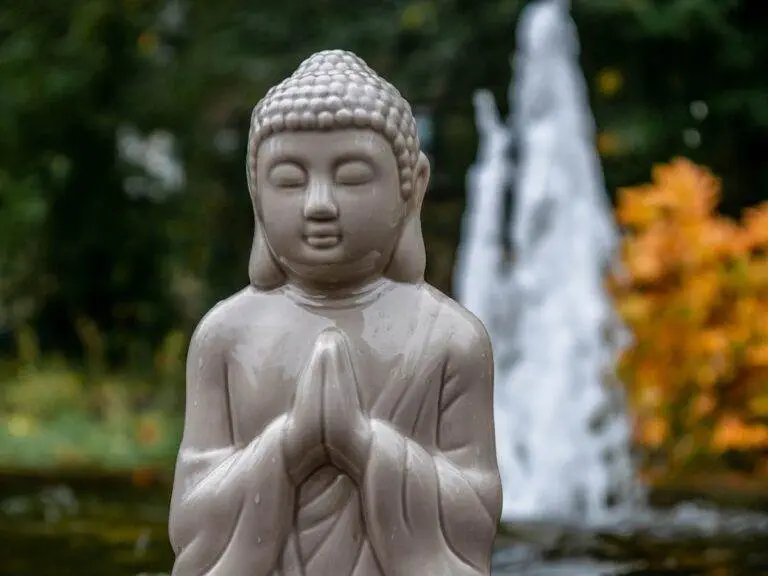In a world filled with constant distractions and material pursuits, the quest for true meaning and enlightenment remains as relevant today as it was when Hermann Hesse penned his masterpiece, ‘SIDDARTHA’. This timeless novel continues to captivate readers with its profound exploration of self-discovery and spiritual awakening. In this comprehensive guide, we’ll delve deep into Hesse’s ‘SIDDARTHA’, uncovering the layers of wisdom and insight that have made it a cornerstone of spiritual literature.
Introduction: The Enduring Appeal of ‘SIDDARTHA’
Hermann Hesse’s ‘SIDDARTHA ‘, first published in 1922, has stood the test of time, resonating with generations of readers seeking answers to life’s most profound questions. Set against the backdrop of ancient India, this novel follows the journey of its titular character, Siddhartha, as he navigates the complex terrain of spirituality, desire, and self-realization.
But what makes ‘SIDDARTHA ‘ so compelling nearly a century after its publication? The answer lies in its universal themes and the timeless nature of its protagonist’s quest. As we explore Hesse’s masterpiece, we’ll uncover why this novel continues to be a beacon for those searching for meaning in their own lives.
The Path of Self-Discovery: Siddhartha’s Journey

From Privilege to Poverty: The Initial Steps
Siddhartha’s journey begins in a place of comfort and privilege. Born into a Brahmin family, he is destined for a life of spiritual leadership. However, this predetermined path fails to satisfy his deep-seated yearning for true understanding. This dissatisfaction propels Siddhartha to abandon his comfortable life and embark on a journey of self-discovery.
Key Insight: Hesse illustrates that true enlightenment often requires stepping out of one’s comfort zone and challenging preconceived notions.
The Ascetic Life: Embracing Extremes
In his search for meaning, Siddhartha joins the Samanas, embracing an ascetic lifestyle of extreme deprivation. This phase of his journey represents the allure of renunciation and self-denial as paths to enlightenment.
Question: Does denying oneself worldly pleasures truly lead to spiritual growth?
Hesse challenges this notion, showing that while asceticism offers valuable lessons, it alone does not provide the answers Siddhartha seeks.
The Material World: Lessons in Desire and Attachment
Frustrated with the limitations of asceticism, Siddhartha swings to the other extreme, immersing himself in the material world. He experiences wealth, sensual pleasures, and the intricacies of business and relationships.
Key Insight: This phase of Siddhartha’s journey illustrates the Buddhist concept of the “middle way” – the idea that true enlightenment lies neither in extreme self-denial nor in unbridled indulgence.
The River: A Metaphor for Life and Unity
The river plays a crucial role in Siddhartha’s journey, serving as both a physical landmark and a powerful metaphor. It is by the river that Siddhartha experiences his most profound revelations.
Question: What does the river symbolize in ‘SIDDARTHA’?
The river represents the flow of life itself – ever-changing yet constant, embodying the paradox of existence. It teaches Siddhartha about the interconnectedness of all things and the cyclical nature of time.
Themes and Philosophical Insights in ‘SIDDARTHA’
The Nature of Knowledge and Experience
One of the central themes in ‘SIDDARTHA’ is the distinction between knowledge and wisdom. Hesse posits that true understanding cannot be taught but must be experienced firsthand.
Key Insight: This theme challenges traditional educational paradigms and encourages readers to seek their own path to wisdom.
The Illusion of Time
Hesse explores the concept of time as a construct of human perception. Through Siddhartha’s experiences, particularly by the river, we see how past, present, and future are interconnected.
Question: How does understanding the nature of time contribute to Siddhartha’s enlightenment?
By transcending linear time, Siddhartha gains a more holistic view of existence, leading to a deeper understanding of life’s interconnectedness.
The Unity of All Things
As Siddhartha progresses on his journey, he begins to perceive the underlying unity of all existence. This realization is central to his ultimate enlightenment.
Key Insight: Hesse’s portrayal of unity aligns with various Eastern philosophies, particularly Buddhism and Hinduism, making ‘SIDDARTHA’ a bridge between Eastern and Western thought.
Frequently Asked Questions About ‘SIDDARTHA’
- Is ‘SIDDARTHA’ based on the life of Buddha?
While inspired by Buddhist philosophy, ‘SIDDARTHA’ is not a retelling of Buddha’s life. Hesse creates a unique character who, like Buddha, seeks enlightenment but follows his own path. - What is the significance of Govinda in the story?
Govinda, Siddhartha’s friend and follower, represents traditional spiritual seeking. His journey contrasts with Siddhartha’s, highlighting the personal nature of enlightenment. - Why does Siddhartha reject traditional teachings?
Siddhartha believes that true wisdom cannot be taught but must be experienced. This rejection underscores the novel’s theme of personal discovery. - What role does Kamala play in Siddhartha’s journey?
Kamala introduces Siddhartha to sensual pleasures and the material world, representing an essential phase in his journey towards understanding the full spectrum of human experience. - How does the concept of Om feature in the novel?
Om, a sacred sound in Indian religions, symbolizes the unity of all things in ‘SIDDARTHA’. It represents Siddhartha’s ultimate realization of the interconnectedness of existence.
The Relevance of ‘SIDDARTHA’ in Modern Times
In our fast-paced, technology-driven world, the themes of ‘Siddhartha‘ remain remarkably relevant. The novel addresses timeless questions about the nature of happiness, the pursuit of meaning, and the balance between material and spiritual aspects of life.
Key Insight: ‘SIDDARTHA’ offers valuable perspectives on mindfulness, self-discovery, and the importance of personal experience in an age of information overload.
Lessons for Personal Growth
- Embrace personal experience: Like Siddhartha, we must be willing to step out of our comfort zones and learn through direct experience.
- Balance is key: The novel teaches us to find a middle ground between asceticism and indulgence.
- Listen to your inner voice: Siddhartha’s journey emphasizes the importance of trusting one’s intuition and inner wisdom.
- Appreciate interconnectedness: Understanding our connection to all things can lead to greater empathy and a sense of purpose.
- Patience in the journey: Enlightenment is not a destination but a lifelong process of growth and understanding.
The Literary Significance of ‘SIDDARTHA’
Hermann Hesse’s ‘SIDDARTHA ‘ stands as a pivotal work in 20th-century literature, bridging Eastern philosophy with Western literary traditions. Its lyrical prose and deeply philosophical content have earned it a place among the classics of world literature.
Question: How has ‘SIDDARTHA ‘ influenced modern literature and philosophy?
The novel’s impact can be seen in the growing Western interest in Eastern spirituality, the popularization of the spiritual journey narrative, and the integration of philosophical concepts into mainstream fiction.
Style and Structure
Hesse’s writing style in ‘SIDDARTHA ‘ is notable for its simplicity and depth. The novel’s structure, divided into two parts, mirrors Siddhartha’s spiritual journey, with each chapter representing a significant phase or realization.
Key Insight: The novel’s accessible yet profound style contributes to its enduring appeal, making complex philosophical concepts approachable to a wide audience.
Conclusion: The Eternal Quest for Meaning
As we conclude our exploration of Hermann Hesse’s ‘SIDDARTHA’, we’re reminded that the search for meaning is an intrinsic part of the human experience. This timeless novel continues to offer guidance, inspiration, and profound insights to readers around the world.
Whether you’re encountering ‘SIDDARTHA’ for the first time or revisiting its wisdom, the journey of self-discovery it portrays remains as relevant and compelling as ever. In a world that often prioritizes external achievements, Hesse’s masterpiece reminds us of the importance of inner growth and understanding.
As Siddhartha learns, true enlightenment comes not from following others’ paths but from embracing our own experiences and listening to the wisdom within. In this lies the enduring power of ‘SIDDARTHA’ – a beacon for all who seek to understand themselves and their place in the vast tapestry of existence.


